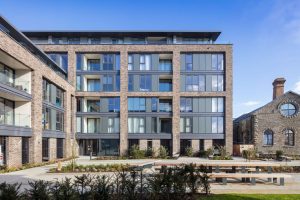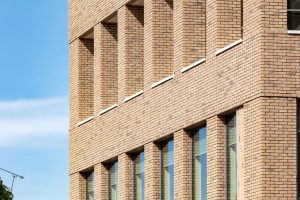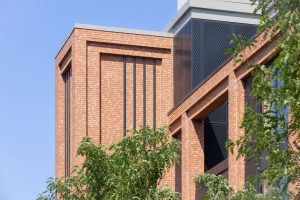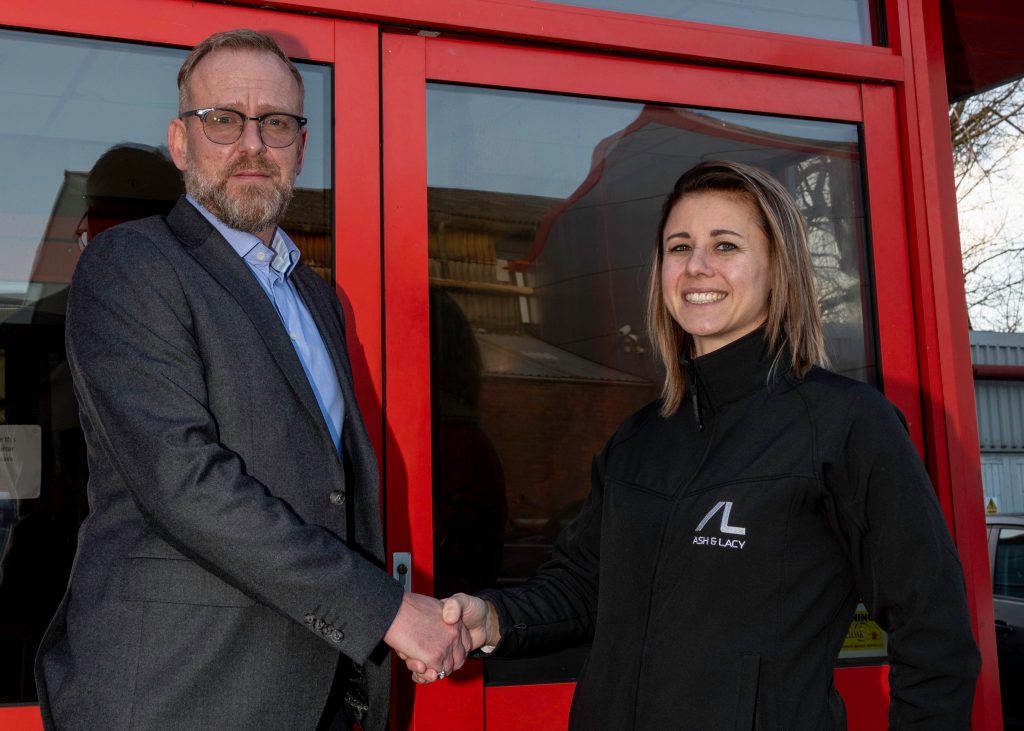After a successful decade, when external brick cladding systems supplier Aquarian Cladding truly established itself as a market leader of brick and terracotta cladding systems, it will not be resting on its laurels for the new decade. Thanks to a recent agreement with leading manufacturers Ash and Lacy and Ibstock Kevington to distribute Mechslip, Aquarian has increased its product portfolio. Here, Aquarian’s MD Paul Richards discusses the reasons behind the partnership and his views on the future of brick cladding solutions.
Aquarian has had sustained success for more than 10 years distributing Gebrik, so tell us about your agreement with Ash and Lacy and Ibstock Kevington to distribute Mechslip and the reasons behind it?
It’s hugely exciting to be just one of two distributors of Mechslip – Ibstock Brick Slip Cladding System. It’s an innovative solution that combines real bricks, cut to form grooved slips, with an aluminium secondary support system to create a robust, yet lightweight, natural brick facade.
We believe that, with the investment that Ash and Lacey and Ibstock Kevington have put into the product development of Mechslip it offers an intelligent, thoroughly tested solution that ticks all the boxes and addresses the current weather-tightness and fire safety fears in the hi-rise market – as it’s a mechanical system, it’s the most durable way of fixing to a building and as it’s also A1-rated, it meets the fire performance of Building Regulations for use on buildings over 18m too.
It’s important to point out though that we are still 100 percent behind Gebrik and it’s still all the things it’s always been – safe, cost-effective, proven, tested, quick and easy to install and a provider of quality aesthetics – but due to current market concerns, we recognised that we had to look at other options to continue to win work in that >18m market.
Introducing Mechslip to the portfolio also gives us a much wider range of brick finishes and means we can offer the right solution to architects and specifiers, whatever the project.
What does the new partnership mean to Aquarian and its customers?
We are absolutely delighted to be partnering with two leading, innovative, manufacturers such as Ash and Lacy and Ibstock Kevington.
We wanted to find partners that share our ethos and believe in the same things as us – providing an intelligent solution and one with integrity. And that’s why they are absolutely the right partners to work with.
Aquarian has become synonymous with offering an honest, reliable service for a quality product so that won’t change. Mechslip provides us and our customers with another high-quality brick solution to choose from so if a specifier wants a brick façade, we now have an option for any building anywhere in the UK.
What does the future hold for Gebrik?
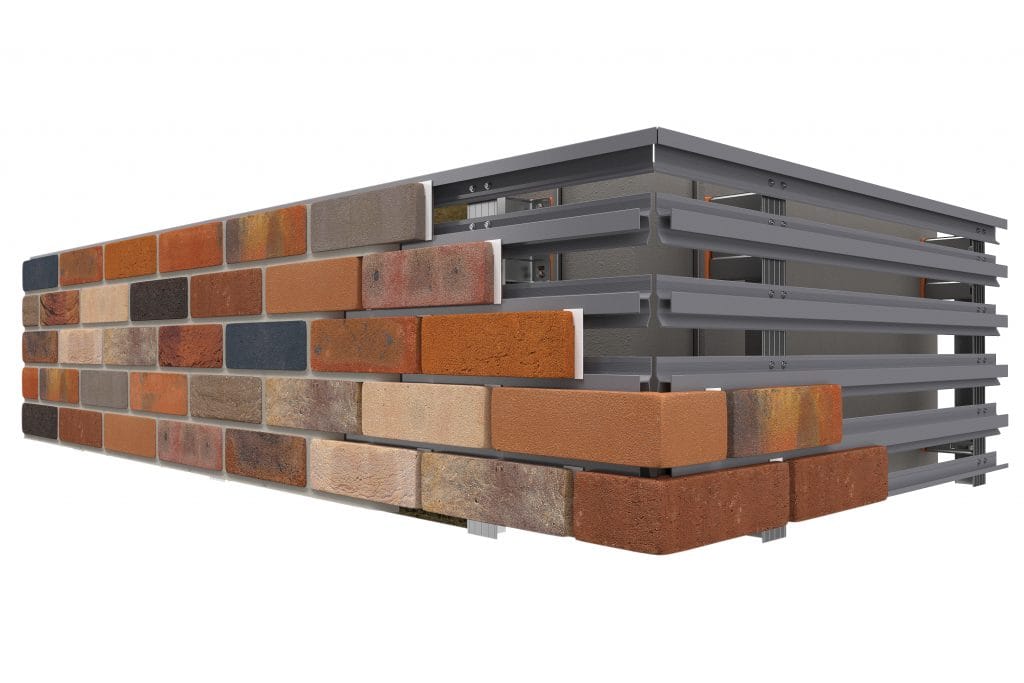 Gebrik has been used on nearly
Gebrik has been used on nearly
500 buildings across the UK and we have built our entire offering around it. We can demonstrate it is fire-safe, robust and cost effective with test data and certification, as well as many examples, often with repeat clients. We have also built the principles of our acclaimed Approved Installer Network on it.
There remains strong demand for Gebrik, particularly from off-site suppliers who are responding to the call from the Government to meet the housing shortage.
It clearly makes sense to use a lightweight, pre-assembled solution like Gebrik that, having invested in all the benefits of an offsite volumetric or panellised solution, can be applied quickly and without the dependency on scaffolding and good weather required for conventional brickwork.
How do you see the brick cladding market developing?
It is evident from increasing demand over the past 12 years that brick cladding systems are an intelligent solution, with a sustainable future in the construction industry.
It’s difficult to be precise but we believe that of the approx. 40M m2 of brick facades made and laid in the UK every year, only approx. 1-2% of brick facades are created using a brick cladding system – and I estimate that to have doubled over the past 5 years. We are therefore still only scratching the surface.
And whilst demand for offsite manufacturing will provide an opportunity for growth, the climate change agenda will also play a part. It doesn’t make sense that we are using a material so durable that it needs to be so thick and heavy – typically with only one side seen.
It surprises me that the industry is so slow to wake up to using a solution that has all the benefits of being natural and robust but without the embodied energy and raw material required to produce a brick, which is typically five times thicker.
I also think the likely introduction of CO2 tax will contribute to an increased use in brick cladding systems by making it a more commercially viable solution.
How will the second phase of the Grenfell Inquiry play its part?
There’s no doubt that the second phase of the Grenfell inquiry, which will focus on the contribution of our industry in the terrible tragedy, is going to have an impact on the way we do things. And rightly so.
I’m hoping there will be an increased awareness amongst suppliers that we have a duty of care to the users of our materials and systems. We know our solutions better than anyone so shouldn’t be focussed on getting the order at all costs.
Instead, we should be investing in product testing and development and ensuring that our people are appropriately trained to assist the specifier in making an informed decision based on evidence – who then correctly specifies something affordable and fit for purpose.
After the initial reaction of shock and anger, we are now seeing evidence of a more considered approach to building safely. For a while most requests seemed to be for A-rated solutions, which arguably is an over-engineered (though understandable), knee-jerk reaction, particularly considering the limited array of non-combustible options.
Of course, we should build safely but we will not meet affordable housing targets with expensive solutions, nor meet climate change targets by predominantly using solutions dependent on sand, especially when there is a global shortage of the stuff.
Use of timber and CLT, green walls, and laminated glass in PV, is also restricted by the push for A-rated solutions but we are starting to witness a change in tone within the industry and, whereas perhaps a year to 18 months ago insurance brokers, funders and clients were not interested in using any material considered to be combustible, they are now prepared to consider it, provided it can be supported with evidence.
It won’t be easy, and it will take time and patience, but I firmly believe the industry understands the error of its ways and with strong leadership, the lessons learned will be applied to ensure safer buildings are built in future.
